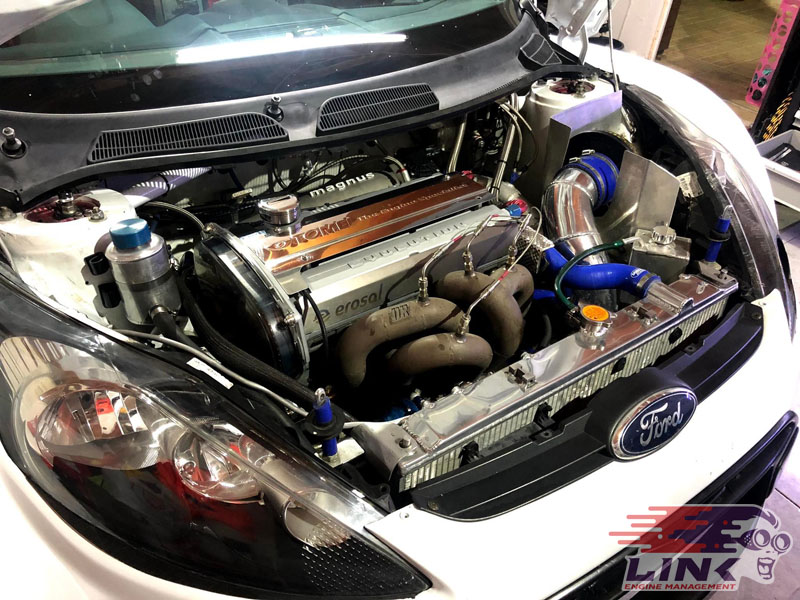Unlocking the Power of Engines: A Comprehensive Overview to Efficiency and Efficiency
Understanding the intricate mechanics of engines is essential for both performance enthusiasts and everyday motorists. The responses may redefine our approach to engine performance and efficiency in means that are both informing and important.
Recognizing Engine Fundamentals
What makes up the fundamental technicians of an engine? At its core, an engine is a maker designed to convert fuel into power through a collection of controlled surges or burning processes. The main components include the cylinder, piston, crankshaft, camshaft, and valves. The cylinder serves as the chamber where burning occurs, while the piston relocates within the cyndrical tube to convert the power from burning into linear movement (ford fiesta engine).
The crankshaft after that transforms this linear movement right into rotational energy, which ultimately powers the vehicle. The camshaft manages the opening and closing of the valves, managing the consumption of air and gas and the expulsion of exhaust gases. In addition, the engine counts on a very carefully adjusted fuel-air combination, ignition system, and cooling down system to guarantee optimum efficiency and efficiency.
Understanding engine essentials additionally involves recognizing the significance of engine cycles, such as the four-stroke cycle, which consists of consumption, power, compression, and exhaust strokes. Each phase is crucial in making certain the engine works smoothly and efficiently. Mastery of these essential auto mechanics lays the foundation for checking out extra complex engine dynamics and efficiency metrics, essential for maximizing both power outcome and efficiency.
Key Efficiency Metrics
Secret performance metrics are vital for examining an engine's effectiveness and power result, giving valuable understandings for both consumers and makers. These metrics work as standards for engine efficiency, enabling for informed decisions in investing in, style, and manufacturing.
One of the key metrics is horse power, which evaluates the engine's capacity to do work over time. Torque, measured in pound-feet, is another critical statistics that shows the engine's rotational pressure, directly affecting velocity and pulling capacity. Gas effectiveness, usually gauged in miles per gallon (MPG) or litres per 100 kilometers (L/100km), analyzes just how successfully the engine transforms fuel right into activity, influencing ecological considerations and operational costs.
In addition, thermal effectiveness actions how well an engine converts gas energy into helpful work, disclosing understandings right into energy losses mainly via warm. Discharge levels, including carbon dioxide and NOx, are likewise important, mirroring the engine's ecological influence and compliance with governing requirements.

Tuning Strategies for Effectiveness
Tuning methods play a substantial role in boosting engine effectiveness by maximizing performance metrics identified in earlier discussions (ford fiesta engine). Different approaches exist to make improvements an engine, each adding to improved gas economy and minimized discharges
One effective technique is readjusting the air-fuel ratio, guaranteeing the engine runs within the ideal combustion routine. A leaner combination can enhance gas performance, yet it should be balanced to avoid misfires or engine knock. Additionally, reprogramming the engine administration system can rectify specifications such as ignition timing, which additionally enhances effectiveness while preserving power output.
An additional crucial technique involves changing the intake and exhaust systems. Upgrading to high-performance air filters and exhaust headers can decrease back pressure, promoting better air movement. This enables the engine to breathe even more freely, bring about improved combustion performance.
Additionally, the application of innovative adjusting tools, like dyno testing, supplies precise information that enables targeted adjustments. Regularly checking these performance metrics guarantees that adjusting efforts generate the desired effectiveness end results. Collectively, these methods not only reinforce engine performance however additionally add to lasting sustainability in engine procedures.
Maintenance for Ideal Efficiency
Regular engine maintenance is vital for Find Out More accomplishing ideal efficiency and long life. A properly maintained engine not just operates effectively yet likewise lessens the threat of expensive repair work and failures. Trick components needing regular focus include oil, filters, belts, and ignition system.
Changing the engine oil at recommended intervals is crucial, as oil lubricates relocating parts and prevents getting too hot. Similarly, changing oil and air filters makes certain that impurities do not hinder engine function. Neglecting these components can cause reduced effectiveness and potential engine damage.
Additionally, checking and changing worn belts and tubes is essential to stop unexpected failings. Timing belts, particularly, should be replaced according to the maker's schedule to prevent disastrous engine damages.
Spark connects ought to additionally be examined and changed as needed, considering that they play an important duty in ignition and fuel effectiveness.
Future Patterns in Engine Technology
Embracing innovations in innovation, the future of engine style is poised to reinvent efficiency and performance throughout different applications. Hybrid and fully electric powertrains are becoming significantly conventional, supplying decreased discharges and improved fuel performance.
Furthermore, developments in products scientific research are leading to lighter, more powerful components that improve engine performance while decreasing energy usage. Advanced manufacturing techniques, such as 3D printing, enable for the production of helpful site intricate geometries that boost airflow and thermal monitoring, therefore optimizing combustion procedures.
Additionally, the integration of expert system and maker learning is readied to change engine diagnostics and performance adjusting. These modern technologies can analyze huge quantities of information in real time, making it possible for predictive upkeep and customized efficiency enhancements.
Final Thought
In final thought, opening the power of engines requires a complete understanding of their auto mechanics and performance metrics. Implementing effective adjusting methods and adhering to regular upkeep practices dramatically boost engine capabilities.
In addition, the engine relies on a carefully adjusted fuel-air mix, ignition system, and cooling down system to make certain optimal efficiency and effectiveness.
Comprehending engine basics also includes recognizing the relevance of engine cycles, such as the four-stroke cycle, which consists of intake, exhaust, power, and compression strokes. Proficiency of these essential mechanics lays the foundation for discovering extra intricate engine dynamics and performance metrics, vital for enhancing both power output and performance.

Welcoming developments in technology, the future of engine style is poised to revolutionize performance and performance Continued throughout numerous applications.